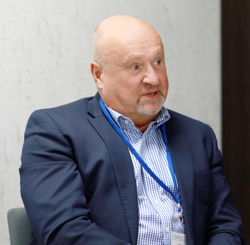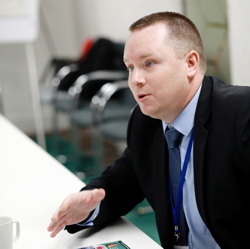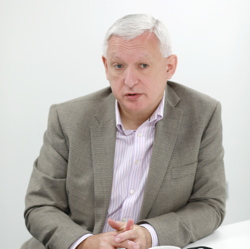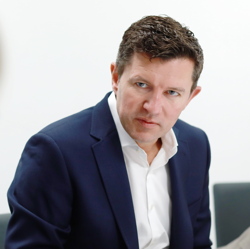Learning the value of construction

UK universities have invested heavily in their building stock. This month’s Round Table, sponsored by Trend Controls, discusses the importance of high quality buildings for this market, and the challenge of operating them efficiently.
Higher education is a thriving business in the UK. George Adams, UK engineering director of SPIE says: “The best way to judge the growth of universities is by looking at the increasing number of student accommodation buildings. The current plan in progress is a huge 130,000 rooms to be built over the next 5 to 7 years, and that is enormous.”
|
WHO’S ON THE PANEL? George Adams – UK engineering director, SPIE; and chair of CIBSE Resilient Cities Group Chris Baldwin – key account manager, Trend Controls Scott Brooks – engineering systems manager for Nottingham Trent University; and chairman of the Association of University Engineers Toby Buckley – managing director of REL Building Services Richard Dewdney – regional wellbeing & BMS sales manager – projects, BMSI |
Toby Buckley, managing director of REL Building Services, agrees: “The sector is very buoyant, and we have lots of enquiries coming in for student residential projects right now.”
However, Scott Brooks, engineering systems manager for Nottingham Trent University and chair of the Association of University Engineers, believes that growth may start to slow.
“There is some uncertainty in the sector,” he says. “Demographics are changing over the next four years and there is a bit of concern about the impact of Brexit on foreign students coming here. Although the university sector has invested billions in new-build and redevelopment work, about 80% of that money was concentrated in a third of the universities.”
It is clear that buildings play an important part in the success of universities. And one of the most important aspects of this is in attracting students. Chris Baldwin, key account manager for Trend Controls, says: “Wellbeing is a big theme across the whole campus, not just the classroom environment. Since universities started charging fees, there was a change in expectations in regard to quality of accommodation. Parents, who are often paying the fees, expect something of quality.”
 |
|
Chris Baldwin: “Wellbeing is a big theme across the whole campus. Since universities started chargingfees, there is a change in expectations in regard to quality of accommodation.” |
Many universities have older buildings, originally constructed in the 1960s and 70s, so refurbishment has also been important. Alterations to campuses and changing methods of study require updated buildings and teaching areas. And sometimes it is more practical to refurbish existing accommodation rather than to demolish and rebuild.
Some aspects of a building can be more easily upgraded than others. Richard Dewdney, regional wellbeing and BMS sales manager, projects, for controls specialist BMSI, says: “There are probably more smaller refurbishment projects happening in greater numbers in this market. From a controls point of view, a BMS is scalable and if, for example, you have a Trend system, it can be updated easily to reflect a change of use. You don’t spend so much up-front, but the building will be more in line with what’s required and is more energy efficient.”
When it comes to operating university buildings, changes have also occurred. Scott Brooks says: “I have worked in the sector for 12 years and during that time it has changed enormously. Students certainly have different expectations now, and our engineering teams have had to become more reactive. Buildings operate 24-hours a day, and there is no summer shut-down for maintenance work.
 |
|
Richard Dewdney: “From the point of view of upgrading or installing building controls, it is vital that we can demonstrate the value of payback to the client. ” |
Wellbeing is now a key issue for universities and this is where the BMS can provide invaluable support in providing high quality internal environments.
Brooks says: “Looking at the issues of energy use and wellbeing, I think our university is pretty typical in that around 2.5% of our annual costs are allocated to energy; while staff costs account for 70% to 80%. With this in mind, a 1% improvement in productivity has a significant impact on the bottom line. And the Stoddart Review showed the link between wellbeing in the workplace and productivity.”
Baldwin agrees: “If a university lecturer leaves because they’re not happy with the teaching environment, the impact of having to recruit again is a lot more than turning down the lights for 10% of the week.”
Dewdney adds: “This is true. As BMS experts, we have promoted the idea of metering, sub-metering and monitoring for energy efficiency. But losing a student or employee because they’re not happy with the environment represents a larger financial impact.”
The real strength of a BMS for supporting wellbeing is in its ability to collect data. Baldwin says: “Wellbeing in a university is about having as much data as you can get. Without data; without information such as temperatures, humidity, air quality, meter outputs, you are an ill-informed university. You don’t have the facts to hand that show how your university is being controlled.”
 |
|
George Adams: “Clients need to understand that the data and analytics lead directly into energy savings, comfort and wellbeing. It needs to be made clear.” |
However, ensuring that a BMS can provide that level of granular data can be a challenge, particularly in the face of value engineering at the early stages of a project.
“When you have your specification and there are lots of temperature, humidity and IAQ monitoring points or sensors, because they don’t have an apparent control function, they can be stripped out of that specification,” says Baldwin.
The challenge is ensuring that the client is aware that the consequences of what might be a £10,000 capital saving on sensors may be much higher in the long term. Toby Buckley agrees: “Even if you use modular construction methods, the reality is that there is a cost uplift in introducing more points in the BMS, and that capital cost is what’s primarily considered.”
George Adams says that this issue lies with the industry rather than clients: “We have not demonstrated the value of the strategy that you outlined. Clients need to understand that the data and analytics lead directly into energy savings, comfort and wellbeing. It needs to be made clear.”
One of the hurdles to shifting the focus to operational costs within a university can be who manages the new-build or refurbishment project. Chris Baldwin says: “A lot of this boils down to the relationship between the estates people and the project people. The estates team is thinking about what they want out of a building for 20 years. A project team’s drive is getting that project built as quickly as possible for the best price.”
 |
|
Toby Buckley: “The sector is very buoyant and we have a lot of enquiries coming in for student residential projects right now. ” |
Scott Brooks adds: “That can be true, but it can vary massively depending on the university. At Nottingham Trent, we have an in-house construction team and a project management team as well as engineering and maintenance within Estates. We work closely to ensure we get the buildings that we want. But certainly, these elements may well be completely separated from the estates team in other organisations.”
Richard Dewdney highlights the importance of showing value for money: “From the point of view of upgrading or installing building controls, it’s vital that we can demonstrate payback to the client.”
Adams feels that it’s important to go beyond the concept of payback: “We need to look at return on investment. Clients aren’t interested in a 15-year payback, it needs to be much quicker . The return on investment is about life cycle cost and operational benefits, but if you say to a client, ‘You are going to operate this building for up to 50 years, if investment in better performance is made, then after the payback period you’re going to be saving money’’, this is a different conversation.”
Adams says that putting issues such as energy and carbon saving on the same page as wellbeing is crucial to presenting all the benefits to clients, particularly those who, like universities, are owner-occupiers.
Brooks agrees: “The university sector has undergone massive investment in the past few years and built some of the most landmark buildings in the UK, so we’re not necessarily a risk-averse sector. But we need evidence to show that, if we are investing significant sums of money, there are clear beneficial outcomes. We need the backup of figures that say wellbeing is going to be improved X% by taking this approach.”
 |
|
Scott Brooks: “Students have different expectations now, and our engineering teams have had to become more reactive. Buildings operate 24 hours a day and there is no summer shutdown.” |
A shortage in the supply of engineers is having an impact across construction, and the universities sector is no exception. “Part of what I do at the AUE is monitor the skills in our sector. We have just over 500 members, and we are very much aware that 70% of them are 45 years or older,” says Brooks.
George Adams agrees: “It is the same story in engineering in general. Our sector is going to lose over 400,000 people in the next five to ten years. It’s already happening.”
The lack of skills is having a direct impact on the operation of buildings. Adams says: “If your building has a BMS, you also need the expertise not only to collect data, but also to analyse and interpret it. The client needs to understand how that information supports the lifetime value of his property. But that is difficult to do in an industry that isn’t attracting enough skilled people into it.”
And from the client’s point of view, lack of staff in supplier organisation leads to challenges: “The big challenge for me is having the right person to get in touch with if we have a problem. And that supplier could be a one-man band or a large corporate. Having that trust and expertise to rely on is vital,” says Brooks.
With controls and data analysis skills in short supply, one of the trends identified by the panel was offsite monitoring of the BMS. Trend Controls and its partners have been providing offsite monitoring to clients: “It really is the most effective way to ensure that the client sees the full benefits of a BMS. It is not simply about monitoring energy use, or plant room operation, but about supporting that allimportant issue of wellbeing,” says Baldwin.







